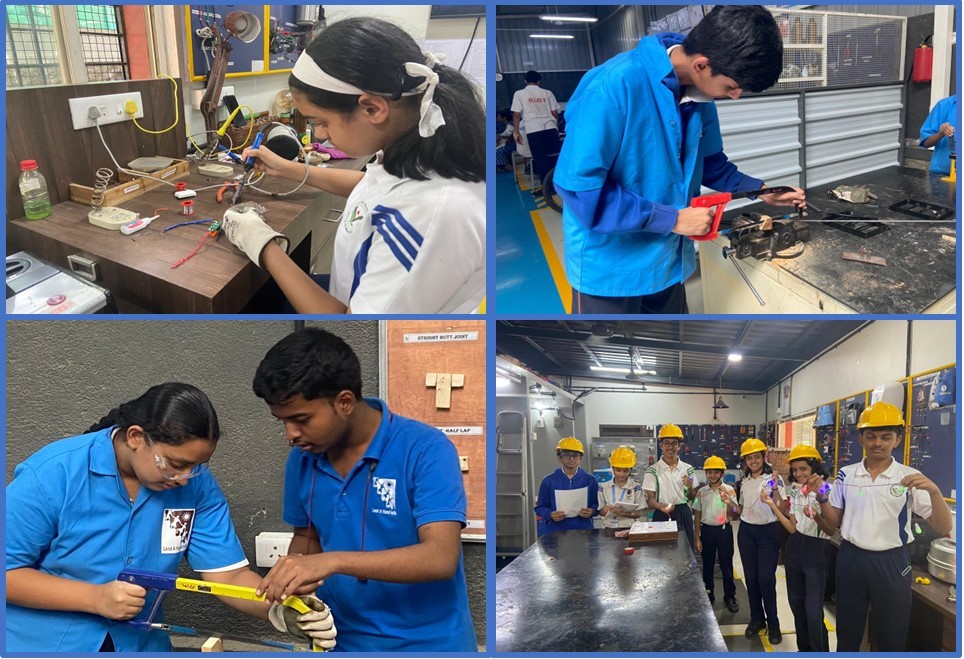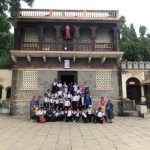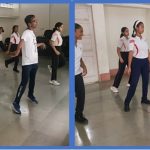
The Little Innovators Club
Report
OBJECTIVES OF LITTLE INNOVATOR’S CLUB
1. To challenge students to create, learn through hands-on and through personalized experiences.
2 To foster innovation through hands-on experimentation.
3. To provide opportunity to be creative and apply personalized learning strategies to make changes to existing concepts or develop their own ideas, methods or products.
4. To make students learn how to make failure into a learning experience and not become discouraged or frustrated when something doesn’t go as planned.
5. To develop in-demand 21st century skill sets to develop young minds for future success.
6. To develop important skills like flexibility, collaboration, adaptability, oral and written communication, information literacy, technology literacy, productivity, social skills, leadership, initiative and more.
7. To promote Design Thinking process in young minds.
The second activity of the Little Innovators Club was held on 26 th August 2023. The 48 club members along with the teachers boarded the bus at 8 AM and moved to a place called ‘Karagir’.
‘Karagir’ is a learning hub where children learn by doing. It believes that this is the best way to train your hands, head and heart. There are more than forty different vocational courses offered at this centre. They call themselves the Disneyland of Vocational Education, a beautiful and interesting concept where the whole place has been converted into various labs such as electrical department, welding and fabrication department, carpentry department, computer department, 3-D printing workshop, App development department,
bakery and gardening.
The students were divided into the same 6 groups of eight students each and then they were oriented about the various work stations. The activity for the group was swapped. They now moved to a different lab activity than the one they attended during the first club activity.
Group 1 was assigned Carpentry. The students were introduced to the different tools and methods. The students learnt the use of hack saw to cut the piece of wood and then used a file to give it a proper shape and make it smooth. They also used the vertical drilling machine and then painted their master piece. The students were able to acquire some techniques of carpentry. This time the students made a Key chain holder carving the letters VPMS.
Group 2 moved to the Computer lab. It was a great experience for the Children as they learnt how to create an app using the MIT app inventor software. It is a very easy to operate app for beginners and can help anyone, even those who aren’t familiar with the wonders of coding, to design their own app. The students learnt how to make a calculator app and an app that converts text to speech. They would now be able to create their own apps.
Group 3 was very excited when they learnt that they would learn to repair a bicycle. At the beginning volunteers explained the history of the motor bike and bicycle. Each part of the two vehicles was explained clearly such as types of breaks, oiling, and greasing etc. The pleasure of having learnt to repair the bicycle and understand the various parts of the motorbike was very interesting for the students. From this activity, they learnt how to solve small problems related to bicycles easily and the mechanism of motorbikes.
Group 4 was trying out their hands in the Fabrication lab. The students were briefed about the tools, safety precautions and the use of the machine. Every student got an opportunity to work hands on. The students were very excited to learn welding, grinding etc. With the help of the instructor the students made a pot stand. The students learnt to work with patience and work together as a team.
Group 5 was assigned the electrical Lab. Here the students learnt about electrical components like resistors, potentiometer, capacitor, transistor, diode, inductor etc. The students here learnt about positive and negative charges. The activity today centred around electrics, where they had the opportunity to create stunning chain lights just in time for festivals like Diwali. This hands-on activity turned out to be an absolute delight and showcased the innovative and interactive approach that Karigar takes in its teaching methods. The students were guided through the process with a perfect balance of expertise and encouragement, allowing them to learn by doing. It was truly refreshing to be part of a learning environment that values practical skills and creativity as much as theoretical knowledge. The chain lights activity is just one example of how Karigar goes above and beyond to make learning engaging, relevant, and fun. They were also permitted to carry their work to school.
Group 6 learnt about 3D printing. The students were shown a detailed power point presentation which helped the students to understand the technical terms and basic information of 3D printing. The students could implement whatever they had learnt using the Tinker cad software is us very user friendly and free. It was fun to watch the pictures come alive on the screen. Then the students
actually made key chains using 3D printing.
The students and the teachers thoroughly enjoyed this experience. We are all looking forward to the next club activity.
Report by
Mrs. Anjali Naik




